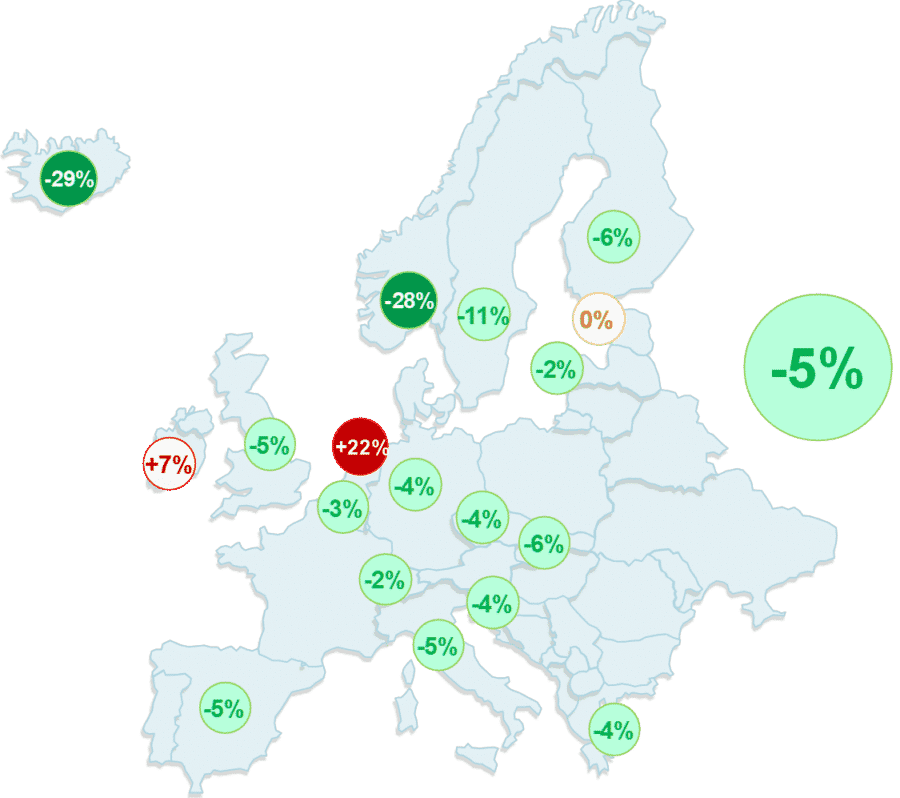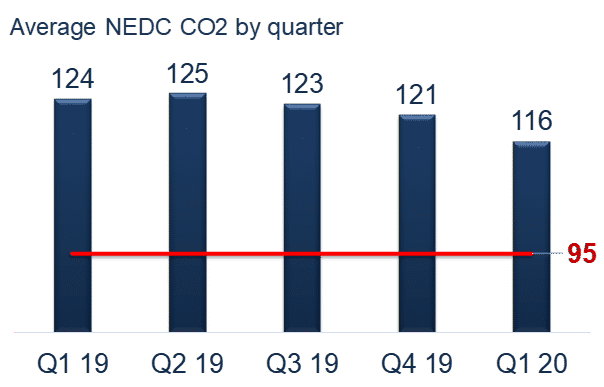Stress on EV supplies, the ongoing hunger for SUVs and tumbling fuel prices have put a lot of pressure on the OEMs to find the right product path towards a penalty free 2020. Whether the EU will lift the fines, temporarily or not, because of the Corona-crisis, the CO2 reduction is necessary. The improvement in the first quarter versus the last quarter of 2019 cuts the average to 116 grams CO2 NEDC, which leaves a gap of 21 grams to cover.
The first quarter shows a reduction of -5% vs. Q4 2019
The general drivers for this effect can be summarized as follows:
- Electrification: Increase of Plug-In vehicles and full electric vehicles. Partly market demand, but also driven by the sheer amount of new entries in the market, such as the Peugeot 208 EV and Ford Kuga Plug-in.





